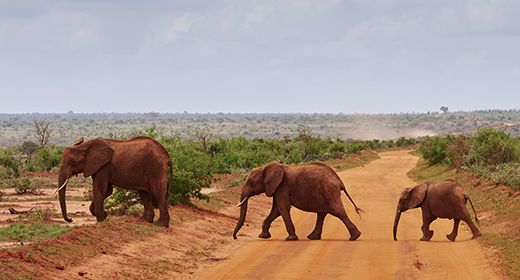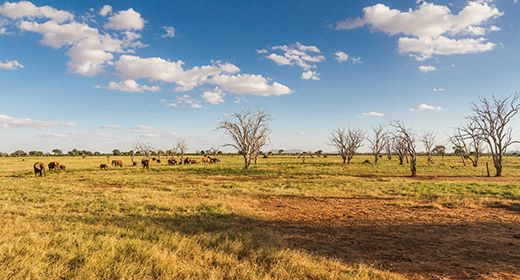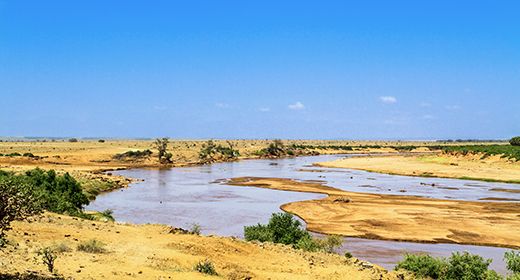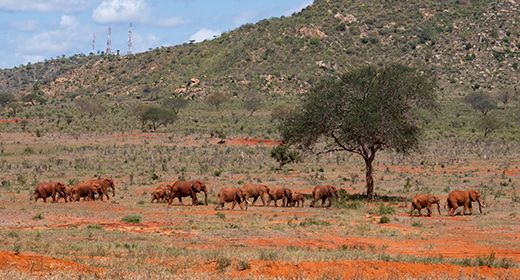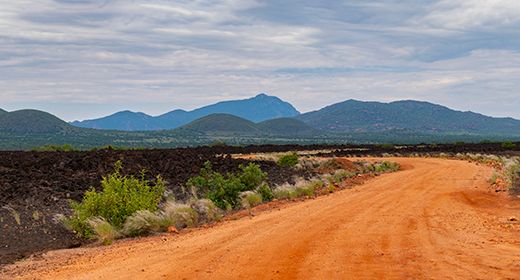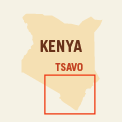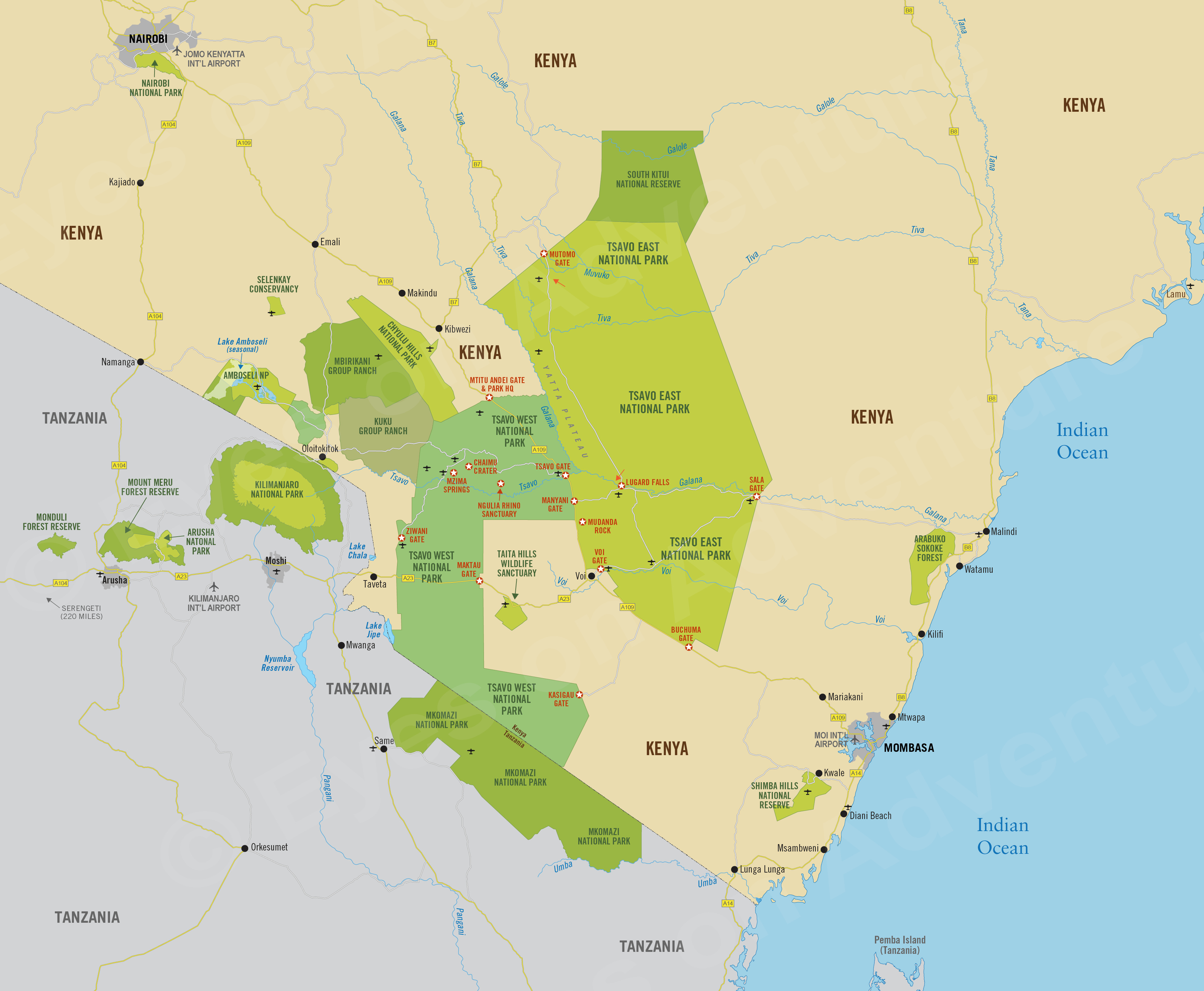Tsavo
(incl. Tsavo East National Park, Tsavo West National Park, Taita Hills)
Region Links: Amboseli & Chyulu Hills, East Coast Kenya, Great Migration, Laikipia, Masai Mara, Nairobi, Rift Valley & Central Highlands, Samburu, Tsavo
Highlights
- Large numbers of elephants; red in color from Tsavo's iron-rich sand
- The combined national parks form Kenya's largest wildlife sanctuary
- All of Africa's Big Five are here
- Ngulia Rhino Sanctuary for black rhinos
- Mzima Springs, a lush oasis in this dry country
EOA Recommends: Finch Hattons, Galdessa Camp, Sarova Taita Hills Game Lodge
Tsavo is comprised of wild, mostly undeveloped, dry bush country with a great diversity of wildlife. It is comprised of two large national parks, Tsavo East and Tsavo West.
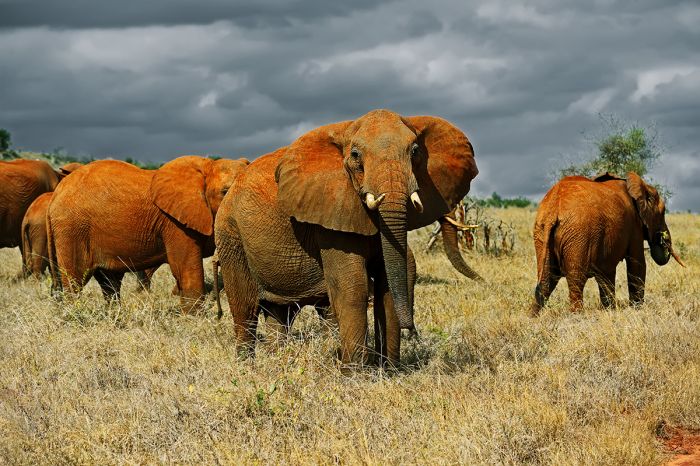
"Red" elephants in Tsavo East.
Both parks, Tsavo East and Tsavo West, are massive and contiguously make up the largest protected wildlife reserve in Kenya and one of the largest in the world. Including the South Kitui National Reserve, which adjoins Tsavo East in the far north, Tsavo covers 9 515 square miles (24 645 sq kms).
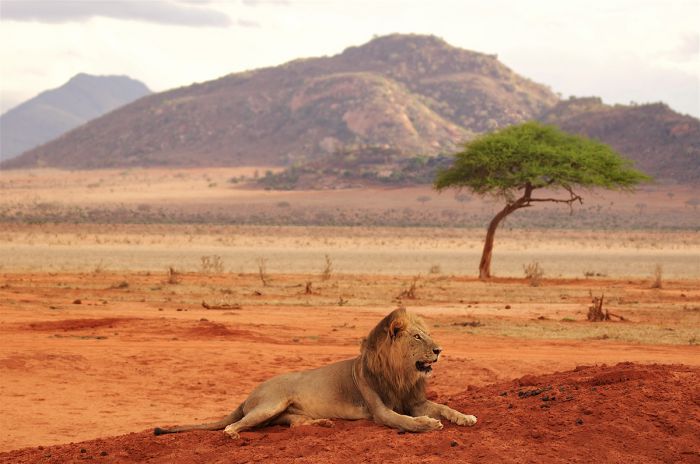
A male lion surveys the Tsavo landscape.
Tsavo West is by far the most visited of the two parks and has a much better developed road network than Tsavo East. The more developed northern section of Tsavo West (where the majority of Tsavo's lodges are located) is relatively small (~ 390 sq miles/1 000 sq kms) and it is here that most tourists base their visit.
Herds of elephants are commonly encountered, as are good-seized herds of buffalo. Other common plains game includes giraffe, zebra, hartebeest, warthogs, and more. Lions are often seen and cheetah, leopard, and jackal are present. The popular Mzima Springs offers underwater viewing of hippos from a specially constructed hide.
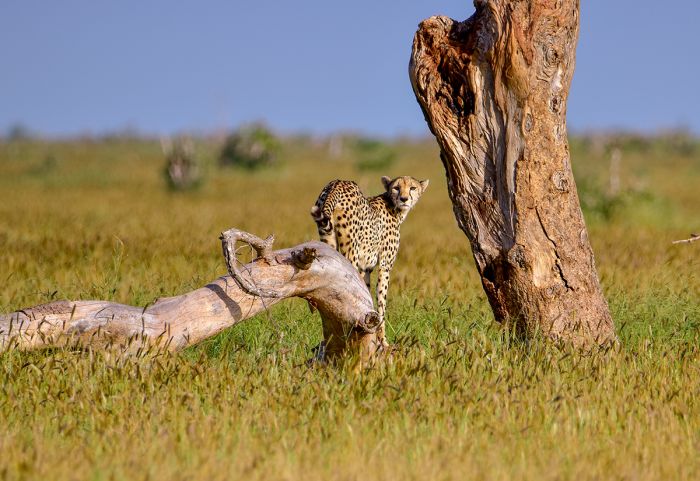
A cheetah in long grass after rains in Tsavo.
Tsavo East is less developed and much less visited than its sister park. Tsavo East has a more harsh landscape, with miles of scrubland and scattered baobab trees. Wildlife is best seen along the Galana and Voi rivers, with elephants, waterbuck, buffalo, zebras, hartebeest, giraffe, impala and more coming to drink. Lions and cheetah are often seen. The Yatta Plateau is a 180-mile (290-km) long lava flow running parallel to the Mombasa-Nairobi Road.
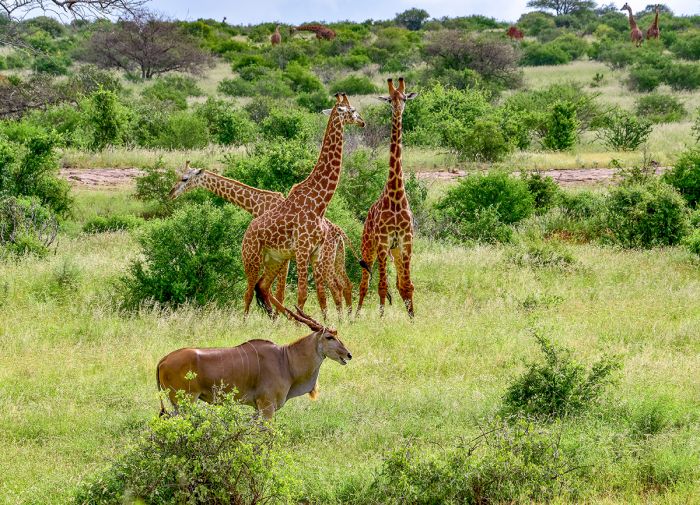
Giraffes and an eland in Tsavo.
Both parks include landscapes of red sand, wide-open spaces, hills, volcanic cones and small patches of riverine forest. Wildlife is plentiful but, due to the enormity of the area, not usually seen in great numbers. The animals disperse more when rains and vegetation are present, but during the drier months, wildlife congregates along the rivers.
In either park, visitors are likely to see good numbers of elephants, zebras, giraffes, lions and a great variety of birds. Tsavo's elephants often appear to be orange-red due to the color of Tsavo's sand.
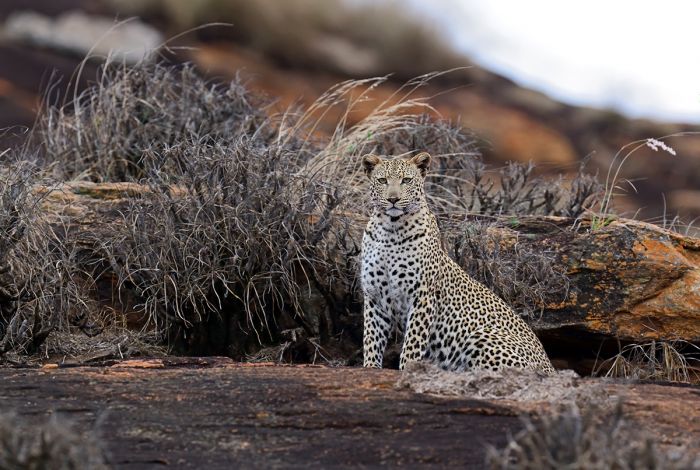
A leopard posing in Tsavo West National Park.
Read More...
David Sheldrick, History, Tsavo East, Tsavo West, South Kitui, Taita Hills
History
The Tsavo region is perhaps best known for being the setting of John Henry Patterson's 1907 book, The Man-eaters of Tsavo. The book recounts the author's experiences overseeing construction of a bridge along the Uganda Railway through British East Africa in 1898. The story focuses on attacks by a pair of lions that reputedly killed 135 railway workers in less than one year before Patterson eventually shot the lions. The book has also been adapted to three movies.
Tsavo's more recent history has included periods of heavy poaching, drought, and persecution of its wildlife, particularly its elephants. Tsavo's elephant population boomed in the late 1960's, with an estimated 35 000 individuals (two animals per square km). This was far more than the park could sustain, and the elephants consumed much of the vegetation over the ensuing few years. The result was a terrible drought in the 1970's, during which 6 000 elephants died of starvation and thirst.
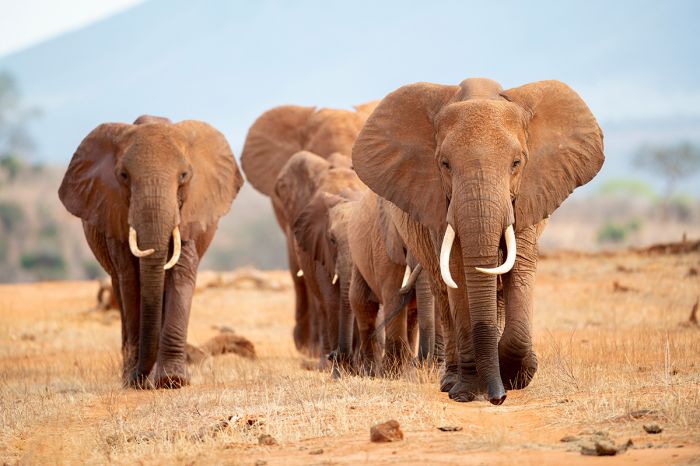
An elephant family in Tsavo West.
Poachers from Somalia also arrived in big numbers at this time, as world ivory demand drove the prices up. When the elephant numbers decreased, the poachers turned their guns on the parks' black rhinos, estimated at 6 000 in the early 1970's, the largest concentration in Africa.
By the late 1980's, nearly all of Tsavo's black rhinos were gone and its elephants were being slaughtered at an alarming rate (several thousand annually).
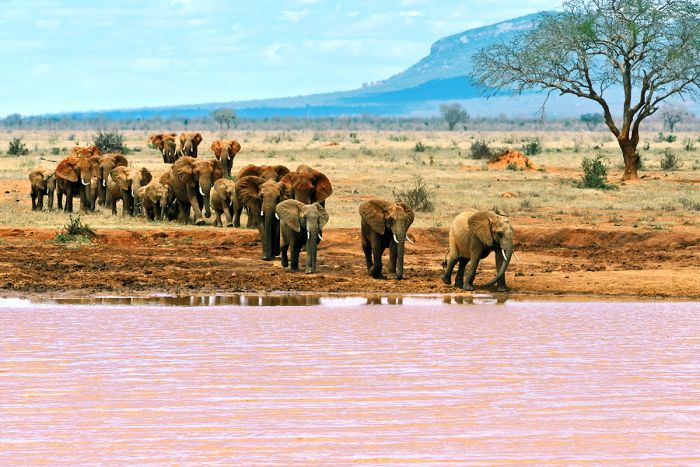
Elephants in Tsavo East.
In the early 1990's, poaching for ivory had reduced Tsavo's elephant numbers to only 6 000 (20% of the 1960's population) and many believed it was too late to save them. Fortunately, in 1975 the international CITES ban on ivory sales coincided with the country's formation of the Kenya Wildlife Service (under Richard Leakey), leading to a new national focus on protecting wildlife.
Kenya's highly publicized burning of its ivory stockpile in 1992, and their new "shoot-on-sight" policy regarding poachers, effectively ended the poaching in Tsavo. Today the elephants in Tsavo number around 12 000 and black rhinos have recovered from a mere three individuals to 150 (although most are in a protected sanctuary within Tsavo West).
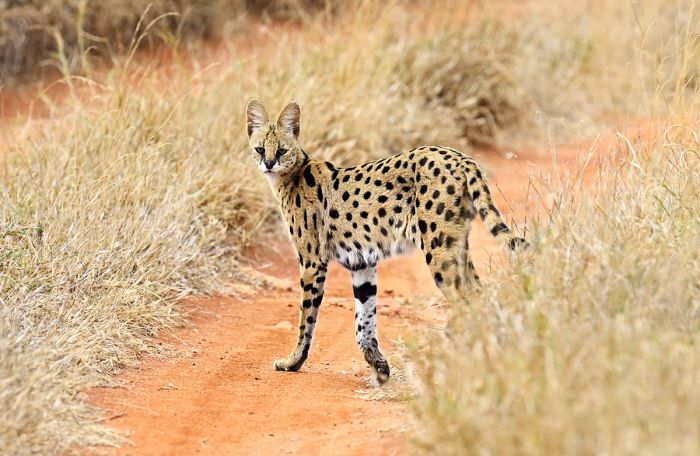
Serval in Tsavo West.
Tsavo East and Tsavo West national parks were originally one immense reserve. In 1948, after being bisected by the Mombasa-Nairobi railway/road, Tsavo was divided into two separate parks for administrative purposes.
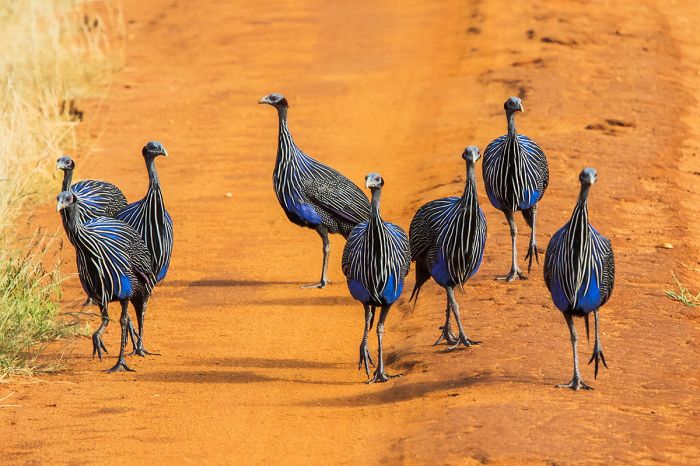
Vulturine guineafowls, Tsavo, Kenya.
Tsavo West
Tsavo West National Park is more mountainous than its eastern counterpart and has more water sources (such as Mzima Springs, Lake Jipe, and several swamps). The park covers 3 500 square miles (9 065 sq kms). It is extremely popular for rock climbing, while guided walks along the Tsavo River are not only beautiful, but promise plenty of opportunities to photograph the wildlife and scenery.
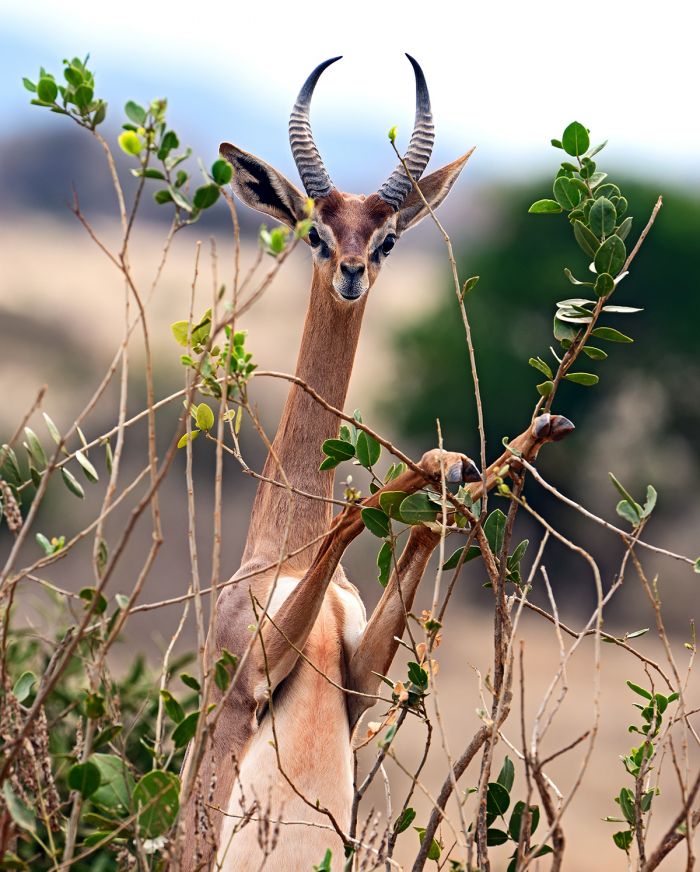
The unique gerenuk antelope browsing on hind legs, Tsavo West.
Most of Tsavo West is covered in thick scrubby acacia woodland and this can make game viewing somewhat challenging. Buffalo and elephant are a sure bet here, as well as giraffe, zebra, impala and Grant's gazelle. Lesser kudu, the shy and more petite cousin of the greater kudu is a specialty of the park.
All of Africa's Big Five animals can be seen in Tsavo West, with lion fairly common and black rhino most likely only seen in the Ngulia Rhino Sanctuary, which is worth a visit.
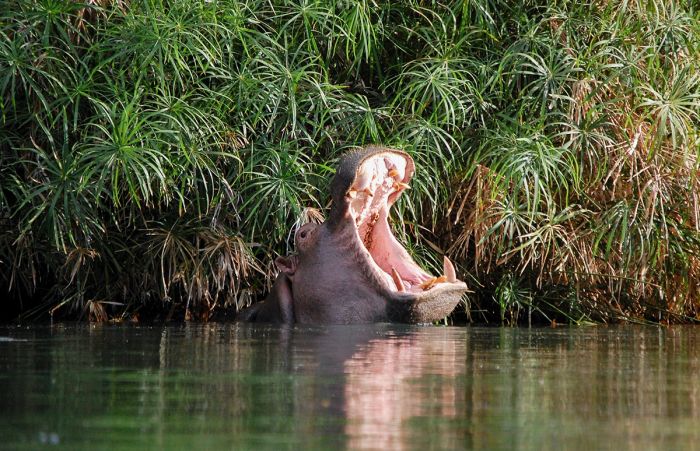
A hippo at Mzima Springs, Tsavo West National Park.
Mzima Springs, fed by underground streams flowing from Mount Kilimanjaro, is Tsavo Wests' biggest attraction. Arrive early to avoid crowds. There are two large pools of crystal clear water that are connected by a stream and bordered by palm trees.
Mzima is a great place to see hippos and crocodiles as they relax in the cool waters. Mzima is an oasis in this dry region and there is a walking trail that ends at an underwater observation hide, where visitors can see the fish and maybe even hippos beneath the surface. Birding at Mzima is excellent.
Other attractions in Tsavo West include the Shetani Caves and Chaimu Crater Trail, as well as the numerous rock climbing routes.
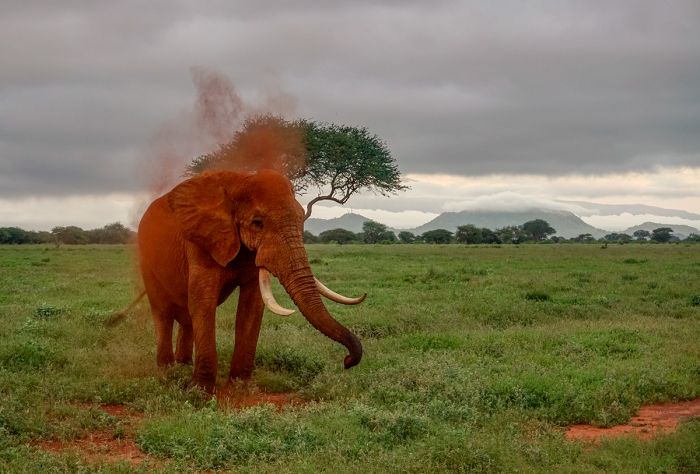
An elephant having a sand bath in Tsavo West National Park.
Tsavo East
Tsavo East National Park is Kenya's largest national park, covering an astounding 5 290 square miles (13 747 sq kms) of red-colored earth. There are a number of rivers in Tsavo East, but much of the terrain is semi-arid grassland and acacia scrub. Drier and more sparsely covered by plant life than Tsavo West, it is a land of true wilderness.
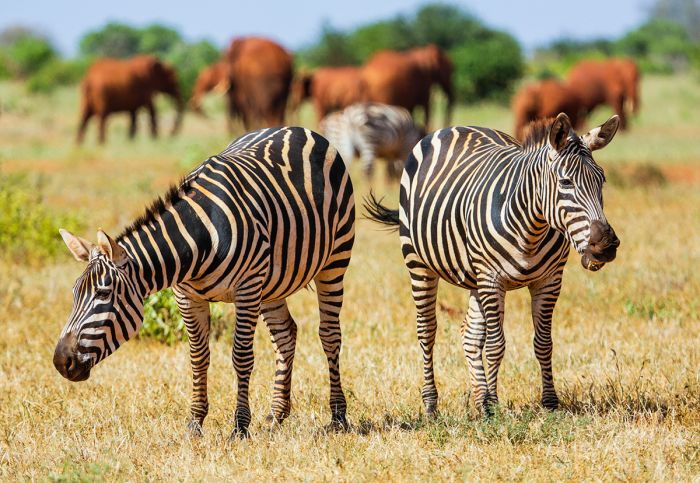
Zebras and elephants in Tsavo East.
The Athi-Galana-Sabaki river, the second longest in Kenya, flows through the park and with its tributaries, brings water to the park's animals. The river splits the park into two sections, with the northern portion only visited under special permission. The smaller southern section still feels remote and wild, with hit or miss, but sometimes fantastic game viewing. Elephants are especially common.
Driving in Tsavo East can feel like you are the only visitor in the park, with hours passing before seeing another vehicle. The perennial Galana River has nice patches of riparian woodland, as does the seasonal Voi River further south. Much of the park's wildlife depend on these rivers during the dry season, and game viewing at this time is very good.
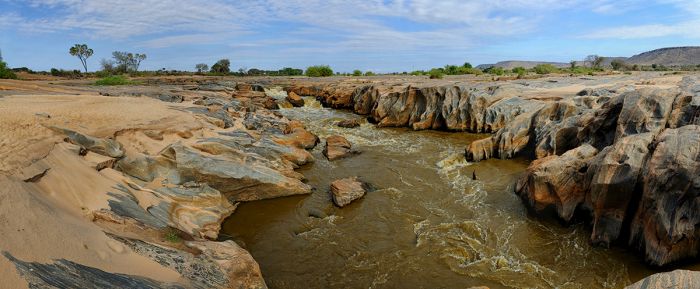
Lugard Falls on the Galana River in Tsavo East.
Lugard Falls, a series of white water rapids flowing over black dolomite and quartz on the Galana River, is a popular spot and worth a visit. Further downriver are pools with hippos and crocodiles. Mudanda Rock, a 1.5-km-long inselberg, is a stunning vantage point from which to see the herds of African elephants and other animals that come to drink from the natural dam below.
All of the Big Five are present, with buffalo and elephants the most common. Lions and leopards can usually be found in the riverine forest along the Galana River, and some black rhino are here as well.
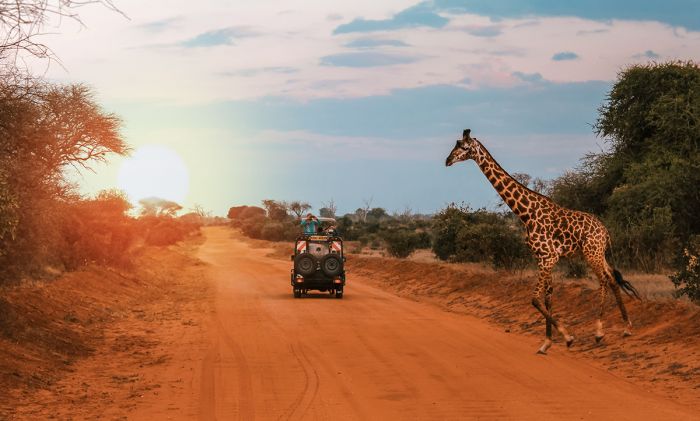
Giraffe and game drive in Tsavo East.
South Kitui
South Kitui National Reserve is a particularly remote reserve that spans 695 square miles (1 800 sq kms). It is characterized by acacia savannas, sprawling grasslands, and patches of thickets. Wildlife that can be seen includes lion, elephant, giraffe, leopard, lesser kudu, hartebeest, and more. The reserve adjoins Tsavo East National Park on its northern border. It is a wild, remote, and seldom visited place.
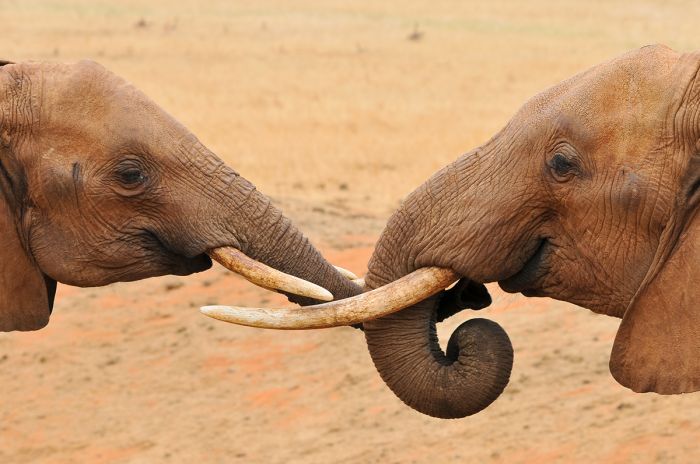
Elephants greeting in Tsavo.
Taita Hills
The 44-square-mile (113-sq-km) Taita Hills Wildlife Sanctuary is a private game sanctuary close to Tsavo West. Created in 1973 by Hilton Hotels, the reserve is now owned and operated by Sarova Hotels. It has excellent game viewing and during the dry months, the waterhole at Salt Lick Lodge is particularly productive.
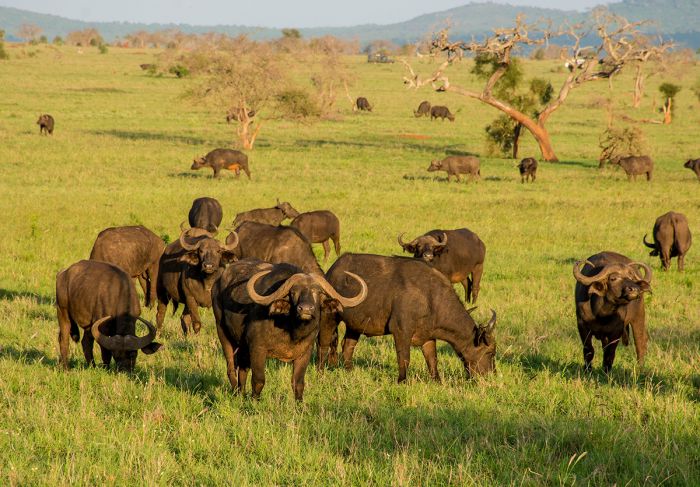
Buffalos in Taita Hills.
David Sheldrick
Re-establishing the elephant population in Tsavo has been a combined effort by the Kenya Wildlife Service and the David Sheldrick Wildlife Trust (DSWT). DSWT is based in Nairobi, where they care for newly orphaned baby elephants (and some rhinos) rescued from the wild.
'Adopting' a baby elephant (for a fee and well worth the money) will allow visitors to Tsavo to visit the release facilities in Tsavo East, either the one near the Voi gate or the one at DSWT's Ithumba Camp in the far north. Prior arrangement is required.
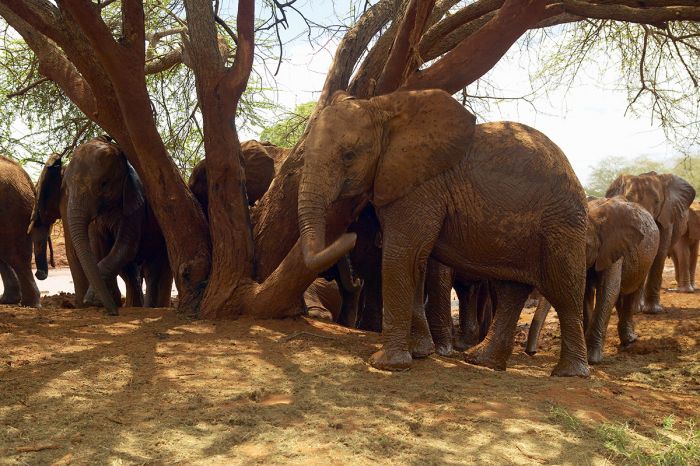
Rescued elephants in Tsavo, David Sheldrick Wildlife Trust.
Read More...
David Sheldrick, History, Tsavo East, Tsavo West, South Kitui, Taita Hills
Great Good Fair Poor
- Jan
- Feb
- Mar
- Apr
- May
- Jun
- Jul
- Aug
- Sep
- Oct
- Nov
- Dec
The best time to visit the Tsavo region is from May to October, when there is less humidity and the weather conditions are mostly dry. The long rainy season is from March to May, while the shorter rains occur for about a month during November/December.
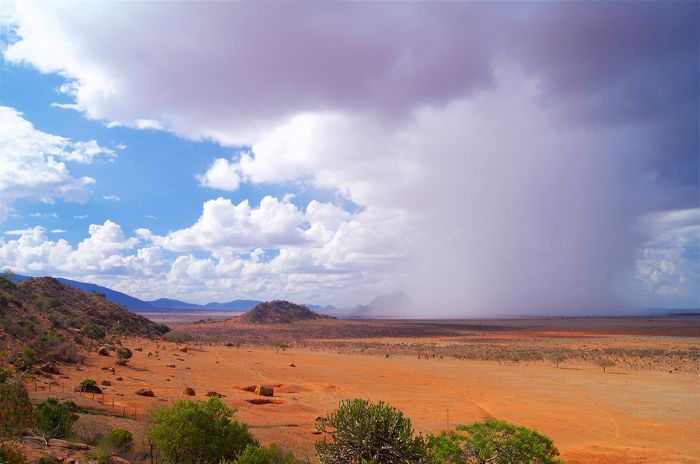
Early rains approaching in a dry Tsavo.
The longer rainy season typically brings heavier downpours that restrict movement and access for visitors, making this a less recommended time to visit. During the shorter, end of year rains, there are typically only light afternoon showers.
Tsavo is located just south of the equator, which means that it does not experience large fluctuations in temperature or seasons. Annually, the daytime temperature averages between 81 and 88°F (27 to 31°C). Nights cool down a little, but are still warm at 72 to 75°F (22 to 24°C). December thru April is hot and humid.
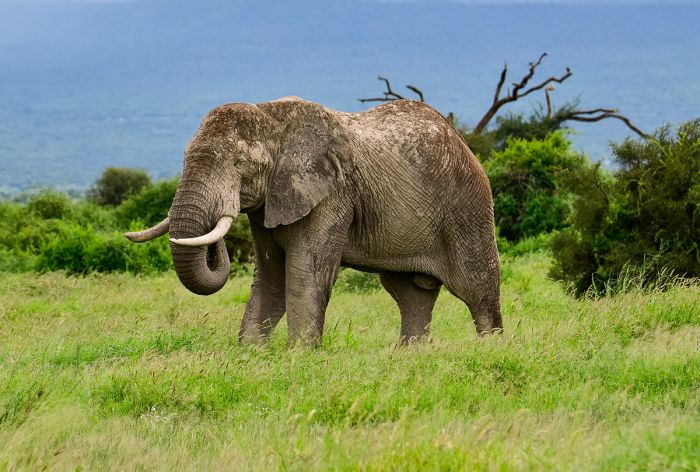
A lovely old elephant bull enjoying the lush rainy season in Tsavo.




